
Nine months ago I was given a chance to witness the evolution of one the world's most iconic brands. At Mattel Headquarters in Los Angeles, the team responsible for branding Barbie was secretly working on plans to transforming the very essence of who she is and what she stands for, and I was invited to join the first ever Global Barbie Advisory Board and be a part of that change.
To be frank, I was skeptical. Mattel is a very traditional company, I told myself. How much would they tamper with a product that has such a rich history with consumers? After all, Barbie has been on toy store shelves since 1959 with relatively few changes. She was a perennial favourite and children had been playing with her pretty much as is for, literally, decades. Could Mattel — would Mattel — be willing to hear voices assembled for the purpose of changing her?
Barbie in 1959 came in two styles: Blonde, and Brunette:
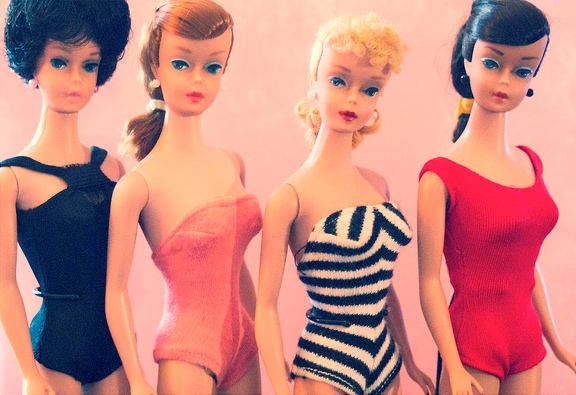
I, along with eleven other board members, were invited to participate in a series of secret meetings sequestered at Mattel headquarters with the top decision makers from Barbie brand team. We went around the table introducing ourselves. My fellow board members were strategically chosen feminists who ran companies, built non-profits, influenced moms, coded games, and coached politicians. Most had fond memories of playing with Barbie, but all of them had issue with Barbie's current persona.
The advisors were all in agreement that Barbie needed to evolve or becoming irrelevant for girls today. Her overly exaggerated figure, her feet which only fit high heels and her push-over personality is not what parents today want their daughters to be playing with.
To our great surprise, the team at Barbie agreed with us and began to reveal their ambitious plans to address parents' concerns by actually changing Barbie's shape, colouring, and personality. There was excitement in the room! We were about to witness something big.
Six months later, we were again called to Mattel Headquarters to participate in another secret roundtable lead by Kim Culmone VP of Barbie Global Creative. This time we were privy to the reveal of a prototype series of Barbies in different shapes, sizes and colours. It was quite thrilling to see how Kim and her team had genuinely absorbed the discussions and feedback we'd participated in and had synthesized the feedback into this brood of Barbies.
Today the new Fashionista collection of Barbies was officially unveiled with an in-depth cover story in Time Magazine. On a personal level, it's pretty thrilling to have been behind the pink veil to see first hand the talent and tenacity required to be bold in rebranding. I'm so proud to have played a tiny part in re-imagining Barbie to become a doll that girls can see themselves in, no matter their size, shape or colour. Finally Barbie reflects the diversity our kids are growing up with to help them spark their imagination and play out their stories without having to wear high heels.

Creative Director Kim Culmone might just have the coolest job on the planet. She started working on Barbie seventeen years ago, and today is responsible for overseeing the entire global team of talented designers who create Barbie's look, hairstyles, clothing, accessories and footwear. Cool, right? Kim is fascinating. She told me how conflicted she had been over the years working on Barbie, how she loved the Barbie brand and its rich history as a pop icon, but also felt like Barbie needed to evolve to stay relevant. This new direction for Barbie has a lot to do with Kim's vision. Here's what she shared with me about her role in the evolution of Barbie:![]() When you heard that Mattel was committing to a substantial (and secret) Barbie transformation for the first time ever, what did you think?
When you heard that Mattel was committing to a substantial (and secret) Barbie transformation for the first time ever, what did you think?
I was lucky enough to be part of the development of the new dolls from the beginning.
We were making products that girls liked, but we were missing parents. This generation of moms and dads are purpose driven and we had not evolved to keep pace. We knew that we needed to refocus on creativity and remind moms about the purpose and power of Barbie – that through open ended play, storytelling and imagination girls can imagine everything they can become through Barbie.
So, after taking on my role as head of Barbie creative, I wanted to challenge my design team and give them the opportunity to think outside of the box. I pulled them together and gave them an assignment, which we called Project Thunder internally. I asked them what they would do to make Barbie a reflection of the current times and they came back with a wide variety of ideas from aesthetic innovations to technology integration.
The team kept coming back to variety and diversity and evolving the body was a key part of their exploration. While this consideration had been brought up many times at Mattel over the years, it was then – because of a variety of internal, external, and societal factors – that we decided to move forward with adding new doll shapes to our Fashionistas line.
I’ve been at Mattel for more than 17 years and this is the most excited I’ve been to come to work. It is exciting that we are reacting faster, taking more risks and refocusing on creativity and innovation. It has been amazing to be part of this project and lead the team through the long and challenging design process. Now, we can’t wait to be able to share the news dolls with consumers.
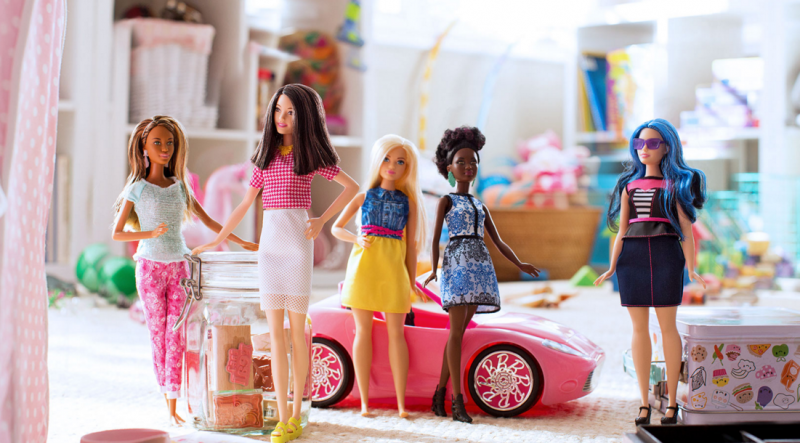
![]() As part of the Global Barbie Advisory Board, I've had a glimpse of the changes you've been in charge of. Can you outline the physical changes you oversaw and why they were necessary?
As part of the Global Barbie Advisory Board, I've had a glimpse of the changes you've been in charge of. Can you outline the physical changes you oversaw and why they were necessary?
Adding variety to the line gives girls choices that are more representative of the world that they see around them.
We spent a lot of time in the exploration phase when designing these new bodies. Our goal was to add new body types that could be peers and were noticeably distinctive when they were next to each other.
My role as a creative leader is to set a vision and then provide guidance, feedback and an editing eye. While I oversaw the entire design process, the credit should go to my amazing design team. They inspire me every day.
![]() What role do you hope Barbie plays in girls' lives today because of the transformations you and your team have designed?
What role do you hope Barbie plays in girls' lives today because of the transformations you and your team have designed?
For 57 years Barbie has been an amazing tool for self-discovery and storytelling. When a child plays with Barbie she takes an imaginative journey. With these additions, girls have more choices than ever before to use their imaginations and play out their stories with a line of dolls that is more reflective of the world they see around them.
![]() I have a feeling you are, but is Barbie a feminist? Why or why not?
I have a feeling you are, but is Barbie a feminist? Why or why not?
At her core Barbie stands for choice, empowerment, creativity and imagination. Barbie has always been a trailblazer. She has had more than 180 careers, went to the moon before Neil Armstrong, has run for president four times and was just recently an entrepreneur – a career underrepresented by women. As a feminist, all of this makes me proud to work on this brand.
So what do YOU think about the new Barbies? Has the design team at Barbie nailed it? Will you be buying Barbie for your girls (or boys) now, or is it too little too late?
Image Source: Barbie/Mattel, Flickr
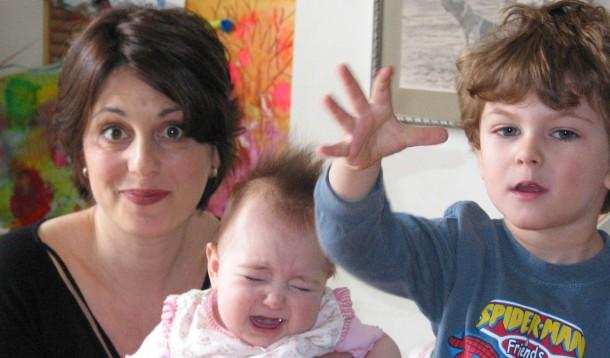
I'm good at several things, but I am not a parenting expert. However, one thing I do have is the luxury of running a parenting website filled with great advice and insight — from parents of all stripes. Recently I was asked for advice from someone who is parenting a 14 year-old daughter. The question was about managing the transition to becoming a teenager — one who wants to spend tons of time with her friends. They wondered how much a parent should step in to manage a teen's time and priorities. I do have a teenager, and this is something I have dealt with, so I felt I could at least offer my opinion (since I was asked).
My short answer: Like snowflakes, every kid is different and needs to be parented in a way that makes sense for who they are.
My long answer? This one took some thought, but it starts and ends with the best advice I've ever been given about being a parent:
"The art of parenting your kids is to teaching them to make the right choices when you're not around."
BOOM.
WHEN YOU ARE NOT AROUND.
For as much as we all want to live forever, that's not going to happen.
The advice rings true. Our job as parents is to help our kids grow to realize the profound importance of understanding right from wrong, and to empower them to make choices based on this information. This is the art of raising amazing kids.
How you get there can vary, but having two pretty amazing kids (if I do say so myself!) makes me feel like my advice might have at least some value - and I am all for moms helping moms. Parenting means living on the learning curve, but here are some "rules" I've used successfully with my kids in helping them make smart choices when I'm not around:
(Note: my definition of "amazing kids" means they are happy, moral, kind, empathetic, and empowered).
This goes back to the idea of starting your relationship with your baby or toddler with the understanding that the expectations you set will form the basis of your teenager's behaviour. It's really hard to change rules mid-stream, so think about setting ground rules early in the game. For example, from the time my kids were tiny we had one rule: DO NOT EAT ON THE WHITE COUCH. They can play on it, jump on it, sleep on it, but food is forbidden. Fast forward eight years later and our sofa still looks great. And my kids have pride of ownership knowing they are partly responsible for not having ruined it. (You should see my kids react with superhero speed if one of their friends accidently gets near it with food in hand!)
Another rule we made early on concerns cell phones. We actually outlined our expectations in a contract my son signed when he was given his first phone. Some of the line items he had to agree to were: no phones at the kitchen table, no phones in the bedroom overnight, and always respond to our texts. It's best to begin something as you mean to finish, so if you don't put those rules in place at the outset, it's definitely more difficult to put them into play without your kids' feeling their rights are being throttled. So try and think ahead and set rules in place before you actually need them.
No matter how awesome kids are, they are going to break rules— it's part of growing up. They need to know in advance what the consequences are for their actions, and then parents need to follow through on enacting the consequence. If my kids break the agreement laid out in their phone contract, their phone is taken away for short periods of time. It stings and reminds them we mean business.
Make sure the consequences you attach to the rule are actually feasible. For example, my husband yelling, "That's it! If you don't go to bed now you're not hanging out with your friends for the next month," would get a thumbs down. First, the consequence has nothing to do with the misbehaviour. And, more importantly, we'd never "punish" our daughter like that because it makes no sense. The questions we ask ourselves is "in what way would this consequence help this kid make the right choice when we're not around?" If my kids go to sleep way past their bedtime, I point out why they're so tired the next morning. The last time my daughter stayed up late she immediately came down with a cold. Not that I want my kids to feel sick, but she is now able to connect poor sleep with not feeling well.
I give my kids a fair amount of age-appropriate freedom. However, I always define what the boundaries are. Clear expectations let my kids know how far they can go (physically or metaphorically). I believe giving kids boundaries shows them you care about their well-being. It also gives them the ability to make the right choices and for you to acknowledge their awesome behaviour.
When something is earned, it holds more value. My kids have housework chores assigned to them. Even though they occasionally grumble, when they've done the work they puff up their chests with pride. Accomplishment feels good and builds self esteem. When they receive their weekly allowance, they know they've earned it. Plus, now I don't have to empty the dishwasher!
This also applies to the time my kids spend with their friends. Homework needs to be considered before they can hang out with their buddies. Somewhere in the equation, my kids have to commit to when their work will get done. If it's not done, they can't hang out with their friends the next time. There have been a few times when they've reneged on their deal and we followed through with limiting their social time. They realized we were serious about work being a priority. Now, if they promise to do something, they follow through.
Trust is an earned privilege. My kids get that. They know I worry if they're late. When they promise to be home at a certain time, they do their best to arrive on time. Or they call or text with an explanation. Slowly, they are earning their independence by proving themselves.
You don't have to agree with them. You're allowed to be upset with them. But do not — ever — embarrass your kids in public. If you feel like strangling them because they did something they shouldn't have, calmly and quietly invite them somewhere private to tell them why you're upset. Let them save face around people they know. Humiliating them publicly just erodes trust between the two of you. I hope they remember this aspect of my parenting when I turn into Sophia from The Golden Girls.
I believe in the old adage that you can tell a lot about someone by the friends they choose. When your kids are little, you control their social life. But as they get older, you get kicked out of their social circles. So I work hard at getting my kids to invite all their friends over to our place to hang out. I tempt them with great after school snacks so I can get know their friends. Getting a sense of who their friends are makes me more (or less) comfortable when my kids want to hang out with their friends. I also make an effort to connect with the parents whenever possible, because you just never know when that connection will be helpful.
Seriously. Never yell ESPECIALLY when you're angry. Plus, it's way scarier when you whisper.
And now to answer my friend's question about their daughter based on all of the points above:
If you have raised your daughter to follow your ground rules, this shouldn't be too challenging. When homework, chores, or other responsibilities and expectations are taken care of, she's earned the right to her independent time. Boundaries are important, so set reasonable curfews. If she misses a curfew, she deals with the predetermined natural consequences. Make sure you know who she's out with (file this under boundaries). If she messes up, tell her privately rather than embarrass her when she's still with friends. Don't yell. Talk it out. Rinse and repeat. And there you have it. An amazing daughter who hopefully will make smart choices when you're not around.
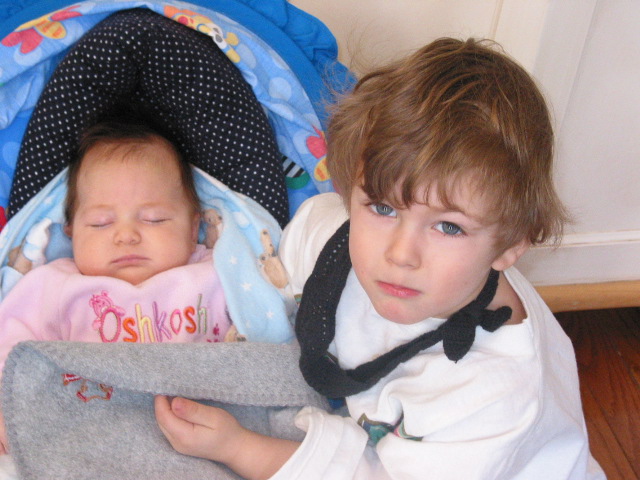
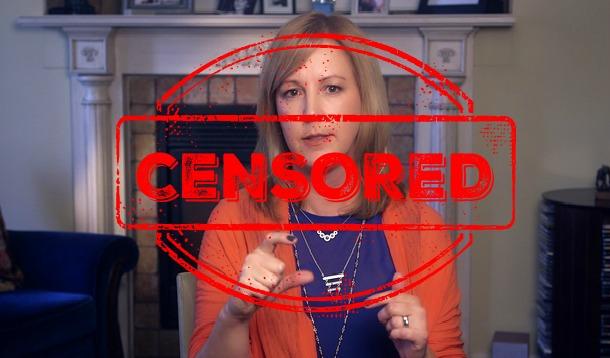
Remember the fiasco when the morality squad at Facebook chose to block an image of a mammogram, claiming it was "inappropriate content"? Understandably, many of us were incensed by the arbitrary definition of what is socially appropriate (or inappropriate) for the average Canadian. After a major brouhaha, Facebook acknowledged that images of mammograms and nursing are in fact, not salacious adult content.
And now I'm experiencing the overbearing righteousness of the morality squad over at YouTube who refused to allow me to promote a YMC video on the basis that it had an "adult image or video content." Huh? Have a look at it and then read on:
As you may know, YMC has partnered with the Centre for Pediatric Pain Research to help bring evidence-based research about pain management to families. Traditionally, the way health researchers package their information is notoriously boring; standard run of the mill pamphlets which gather dust in doctor's offices or instructional videos posted on poorly visited sites. With our #ItDoesntHaveToHurt program, the team at YMC is taking pediatric pain research and sharing it in entertaining ways so parents will pay attention.
We just released a super cute video featuring YMC writer Lisa Thornbury whose daughter has had her fair share of painful procedures during frequent hospital visits. Known for her sense of humour, we tasked Lisa with explaining how to prevent children's pain in a playful way. The result was How a Bikini Wax Inspired A Mom To Help Her Daughters Pain.
The team at the Centre for Pediatric Pain Research, lead by award-winning researcher Dr. Christine Chambers, loved the video. They called in their parent panel and their more conservative research colleagues to vet the content. Thumbs up all around. In fact, one of the members of the research team even tweeted that it was her favourite campaign content yet.
Based on the high level of excitement about the video, we decided to "boost" it, so more Canadian families would be able to see it and benefit from the information. That's when it was flagged by the YouTube team for promoting "adult" or "non-family safe" content. Clearly there was a mistake so I called their customer service line and waited while my contact there watched the video. Her response was, "I don't see any adult content in this video. I will send it to our team who will be able to unflag it for you."
But today, when Chad from YouTube called me, he had bad news. The "morality squad" at Google felt that this video did indeed have adult content in it. Saying the words "bikini wax" did not align with their family policy, and therefore it could not be promoted. He suggested I remove the words from the video. While I explained that the WHOLE POINT of the video was how a mom learned to treat her child's pain through her experience with a BIKINI WAX, he replied that there was nothing he could do. The verdict had been passed down. Google had spoken.
The frustrating part of this is that a large corporation has consciously decided to block useful, relatable medical information on some uber-conservative technicality. They're essentially censoring the video because someone has deemed the words bikini wax to be inappropriate for impressionable young minds. There is no visual of a bikini wax. There is no sound of a bikini wax. There is no bikini wax - just a funny story with a punchline that can help families.
So we're going to have to do this differently. I'm counting on you to share this story, so the powers-that-be at Google can see the small-minded decisions their employees are making. And secondly, if you think the video is worthwhile, please boldly share it with all the families who could benefit from a cute two-minute video featuring evidence-based research about children's pain.
For a company like Google who prides itself on innovation and social good, shame on them for this small-minded decision that can only hurt families who need to learn how to deal with pediatric pain.